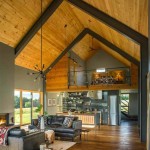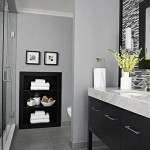Creating a Tranquil Ambiance: Decor for a Massage Room
A massage room should be a sanctuary, a space designed to promote relaxation, healing, and rejuvenation. Decor plays a crucial role in setting the right tone and enhancing the overall client experience. Every element, from the color palette to the choice of materials, contributes to creating an atmosphere of calm and serenity. A well-decorated massage room not only reflects professionalism but also demonstrates a commitment to providing a holistic and client-focused service.
The goal of massage room decor is to minimize distractions and maximize comfort. This involves careful consideration of the sensory experience, including visual, auditory, and olfactory elements. A harmonious and well-thought-out design can help clients to disconnect from the stresses of daily life and fully immerse themselves in the therapeutic benefits of the massage. Ultimately, the decor should support the practitioner's skill and contribute to a positive and memorable experience for the client.
Optimizing Space and Layout
The arrangement of furniture and equipment is paramount in maximizing the functionality and flow of the massage room. A cluttered or cramped space can hinder movement and create a sense of unease. The layout should allow the therapist to move freely around the massage table while ensuring that all necessary tools and supplies are within easy reach. Consideration should be given to the size of the room and the types of massage services offered. For example, a room designed for hot stone massage may require additional space for heating equipment and stone storage.
The massage table itself is the focal point of the room and should be positioned strategically. Ideally, it should be placed so that the client's head is facing away from the door, minimizing any feelings of vulnerability. Sufficient space should be left on all sides of the table to allow the therapist to maneuver comfortably. The placement of shelves, cabinets, and other storage units should be carefully planned to avoid obstructing pathways and creating a feeling of congestion. Wall-mounted shelves are often a useful solution for maximizing space and keeping essential items organized.
Adequate lighting is another critical aspect of space optimization. Natural light is highly desirable, but if it is limited, artificial lighting should be used to create a soft and inviting atmosphere. Dimmable lights allow the therapist to adjust the brightness according to the client's preferences and the type of massage being performed. In addition to general lighting, task lighting may be needed for specific areas, such as the therapist's workstation or the massage table itself. Strategic placement of mirrors can also help to enhance the sense of space and light.
Furthermore, the presence of any medical equipment or devices should be discreetly integrated into the room's design. While functionality is important, minimizing the clinical appearance of the room can improve the client's comfort and relaxation. Concealing equipment behind partitions or incorporating it into custom-built cabinetry can help to create a more inviting and less intimidating environment.
Choosing Calming Colors and Textures
Color psychology suggests that certain hues can have a profound impact on mood and emotions. When decorating a massage room, it is advisable to choose colors that promote relaxation, tranquility, and well-being. Soft, muted tones such as blues, greens, grays, and earth tones are generally considered to be the most effective choices. These colors evoke a sense of calm and serenity, helping clients to unwind and release tension. Avoid using bright, vibrant colors such as reds, oranges, and yellows, as they can be overstimulating and counterproductive to the desired atmosphere.
The texture of materials used in the massage room also plays a crucial role in creating a calming environment. Soft, natural fabrics such as cotton, linen, and silk are ideal choices for bedding, curtains, and upholstery. These materials feel gentle against the skin and contribute to a sense of comfort and luxury. Rough or synthetic fabrics should be avoided, as they can be irritating and detract from the overall sensory experience. Consider incorporating tactile elements such as textured walls, soft rugs, or plush blankets to enhance the feeling of comfort and relaxation.
The flooring of the massage room should also be chosen with care. Hard surfaces such as tile or hardwood can be cold and uninviting. Instead, opt for soft, warm materials such as carpeting or cork flooring. These materials provide a comfortable surface to walk on and help to absorb sound, creating a quieter and more peaceful atmosphere. If carpeting is used, it should be low-pile and easy to clean to prevent the buildup of dust and allergens. Rugs can also be used to define specific areas of the room and add visual interest.
Beyond the larger elements, smaller details such as the choice of artwork and decorative accessories can further enhance the calming ambiance. Choose pieces that are soothing and aesthetically pleasing, such as nature scenes, abstract paintings, or minimalist sculptures. Avoid displaying overly complex or emotionally charged artwork, as it can be distracting or unsettling. The use of plants can also help to create a sense of tranquility and connection with nature. Choose low-maintenance plants that thrive in indoor environments and are known for their air-purifying properties. The addition of natural elements such as stones, shells, or driftwood can also contribute to the overall sense of calm and well-being.
Incorporating Sensory Elements for Enhanced Relaxation
The sensory environment of a massage room extends beyond visual and tactile elements to include auditory and olfactory experiences. Soft, calming music is an essential component of a relaxing massage session. Choose instrumental music with a slow tempo and gentle melodies. Nature sounds such as rain, ocean waves, or birdsong can also be effective in creating a peaceful and serene atmosphere. Avoid playing music with lyrics or strong rhythms, as it can be distracting or overstimulating. The volume of the music should be kept low and consistent to avoid disrupting the client's relaxation.
Aromatherapy is another powerful tool for enhancing relaxation and promoting a sense of well-being. Essential oils such as lavender, chamomile, and sandalwood are known for their calming and stress-relieving properties. These oils can be diffused into the air using an aromatherapy diffuser or applied directly to the skin in diluted form. Be mindful of any allergies or sensitivities that the client may have before using essential oils. It is also important to choose high-quality, therapeutic-grade essential oils to ensure their safety and effectiveness. In addition to essential oils, scented candles or incense can also be used to create a pleasant and relaxing aroma. However, it is important to choose scents that are not overpowering or irritating.
Temperature control is crucial for creating a comfortable and relaxing environment. The massage room should be kept at a temperature that is warm enough to prevent the client from feeling cold, but not so warm that they feel overheated. A thermostat should be easily accessible to allow the therapist to adjust the temperature as needed. In addition to temperature control, proper ventilation is also important for maintaining air quality and preventing the buildup of odors. An air purifier can be used to remove dust, allergens, and other pollutants from the air. The room should also be regularly cleaned and sanitized to prevent the spread of germs.
Finally, consider the tactile experience beyond the massage itself. Provide comfortable linens, soft blankets, and a supportive pillow to enhance the client's physical comfort. Offer warm towels or compresses to soothe tired muscles and promote relaxation. Small details such as a cup of herbal tea or a glass of infused water can also enhance the overall experience and make the client feel pampered and cared for. By paying attention to all of the sensory elements, it is possible to create a massage room that is truly a sanctuary for relaxation and healing.
By carefully considering these elements, practitioners can create a massage room that is not only functional and professional but also deeply relaxing and therapeutic for their clients. The investment in thoughtful decor can significantly enhance the overall massage experience, leading to greater client satisfaction and loyalty.

Most Beautiful And Stylish Massage Room Decoration Ideas Spa Decor Esthetician Design

Inspired Massage Room Setup And Décor Ideas

Massage Room Decorating Ideas Decor Spa

Design A Massage Room That Inspires And Reflects Your Style Massagebook

Inspired Massage Room Setup And Décor Ideas
.png?strip=all)
Design A Massage Room That Inspires And Reflects Your Style Massagebook

Love This Soothing Lighting In Massage Room Design Decor

Massage Room Decor Your Clients Will Love

Top 10 Ways To Upgrade A Tired Massage Table Warehouse

Create Your Own Massage Room







